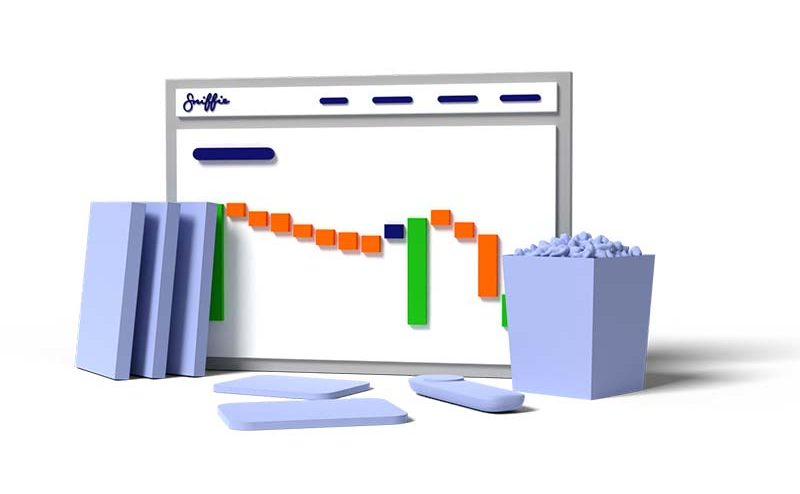If you need to determine pricing for multiple products in a fast and efficient way, the markup pricing strategy is the go-to strategy for you. The relative simplicity and scalability of this technique makes it a logical choice for many companies.
This pricing technique is based on adding a markup on top of the cost of a product. By doing so, retailers can easily price multiple products based on the desired profit margin, without having to do this on a case-by-case basis. Let’s look at an example to make this concept more clear.
How does a markup pricing strategy work?
If a product costs the retailer $10, and they have a markup of 30%, the retail price of that product would be $13. These $13 include the product’s cost of $10 and the gross profit of the retailer, which is $3 for the 30% markup.
By setting the markup as a percentage, retailers can set the price for any product just by knowing its cost. All they have to do is multiply the cost by their desired profit margin, and they’ll get the retail price.
Despite the fact that a markup pricing strategy is relatively easy to use, it isn’t the best choice for all situations. To determine whether this pricing strategy is the correct one for your business, you need to consider its pros and cons. This way you’ll be able to decide if the pros will outweigh the cons for your specific case.
Download our Free Margin Calculator
Use our Margin Calculator to understand how your price is in line with your costs and preferred margin target.

Pros and cons of a markup pricing strategy
Pros of markup pricing
A markup pricing strategy is great for bulk pricing
Some retailers have hundreds of products to price and doing this one product at a time is time-consuming. Not to mention, when you add new incoming products to this equation you can find yourself in a tricky situation.
If this sounds familiar, markup pricing could be the solution for you. Set a profit margin as a percentage, multiply by each product’s cost, and you’re done. This will save the cost of the decision making that you would need with other pricing methods. Another option is to use some sort of pricing automation software where you can set more complex strategies and let the AI take care of the rest.
A markup pricing strategy requires less information
The process of pricing products the “right way” requires humongous amount of information. You need to know everything from the cost of the product to the current market demand for a given product product. With markup pricing, all you need to know is how much the product costs. And by how much it costs, we mean the total cost, including each and every operational fees.
Although conducting in-depth research before determining prices is generally considered as a valuable practice, it’s not possible – nor feasible – in all industries. And that’s where the markup pricing strategy truly shines.
Join the Sniffie Pricing Academy!
Join the Sniffie Pricing Academy to learn how costs and profitability are related, and how to calculate product margins.

Cons of markup pricing
A markup pricing strategy may promote operational inefficiency
For any business, lowering the operational and manufacturing costs of any product means increased revenues. That is the optimal scenario though because when you’re using markup pricing, this is hardly the case.
Since you’re multiplying your cost by a profit margin anyway, lowering costs will not make much difference. Regardless of the costs, you’re making 30%. In fact, if the costs are higher, your profit margin should increase as well. Unless the competition is fierce enough to make efficiency a must, using this pricing strategy could provide an incentive for being inefficient.
A markup pricing strategy could lower your profit margins
While bulk pricing is a great idea when you’re selling hundreds of different products, it’s a poor idea for other products. If you’re selling something considered unique or innovative, people might be willing to pay more for it than you think. If you use a markup pricing strategy with such products, you could be leaving money on the table.
A good rule of thumb is that for businesses with few products that people are willing to pay a premium for, a markup pricing strategy isn’t the right pricing strategy.
Important considerations for a successful markup pricing strategy
While markup pricing might appear to be a straightforward solution for all your pricing needs, it isn’t as simple as it seems. To maximize the benefits of markup pricing, there are a few key considerations to keep in mind. By doing so, you’ll ensure the best possible outcome when using this technique.
Operational costs of markup pricing
When calculating the cost of a product, many businesses might overlook the operational cost. Since this entire pricing method is based on knowing the exact price of your product, ignoring this aspect can cause all sorts of problems.
In addition to the wholesale or manufacturing cost of a product, you should factor in different costs that you must incur to sell that product. These can be shipping costs, rent of premises, and even the wages you pay for the staff operating the store.
For some businesses, these costs can add up pretty fast and if not included in the calculations, your actual profit margin might be lower than what you initially calculated. And for some products, you might even be losing money on each unit you sell.
Prices of your competitors
Even though markup pricing is based on your actual cost per product and your profit margin, there are lots of competitors out there. If you want your products to sell well, you should keep an eye on your competitors and the prices of your products.
If the cost of your products is too high, you might end up with prices that are too high compared to the prices of your competition which makes you unable to compete with them. In this case, you’ll need to lower either the cost of the product or your profit margin to stay competitive.
Market demand
If analyzing the impact of your new prices on demand is feasible, you should do this as a part of your pricing process. This ensures you will avoid any unwanted customer reactions to your new prices.
Frequently asked questions on markup pricing strategies
How does the markup pricing strategy accommodate changes in operational and manufacturing costs, and how does it affect profit margins when these costs fluctuate?
The markup pricing strategy accommodates changes in operational and manufacturing costs by maintaining a fixed percentage markup on the total cost of the product. When these costs fluctuate, the percentage markup remains constant, resulting in corresponding changes in the retail price of the product. If operational or manufacturing costs increase, the retail price will also increase to maintain the desired profit margin. Conversely, if costs decrease, the retail price will decrease accordingly. However, this pricing method may not incentivize cost efficiency as the profit margin remains fixed regardless of cost changes.
In what scenarios does the markup pricing strategy incentivize inefficiency in operational processes, and how can businesses mitigate this risk while utilizing this pricing method?
The markup pricing strategy may promote operational inefficiency because it focuses solely on maintaining a fixed profit margin rather than optimizing costs. Since the markup percentage remains constant, there is less incentive for businesses to streamline operations or reduce manufacturing costs. This can lead to suboptimal cost management practices and may not align with efforts to improve operational efficiency. To mitigate this risk, businesses can implement cost-control measures independently of the pricing strategy or adopt pricing automation software to handle more complex strategies while ensuring cost efficiency.
What strategies can businesses employing the markup pricing strategy employ to remain competitive in markets where product uniqueness or innovation may warrant higher prices than those determined by a simple cost-based markup approach?


